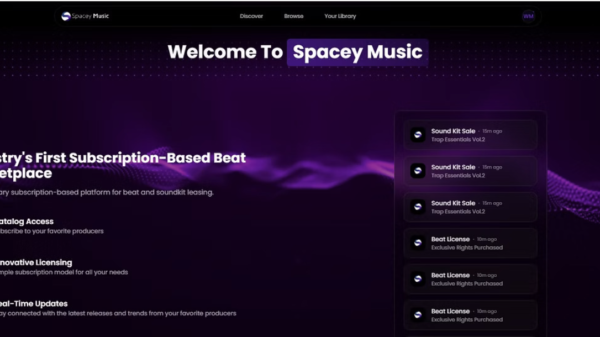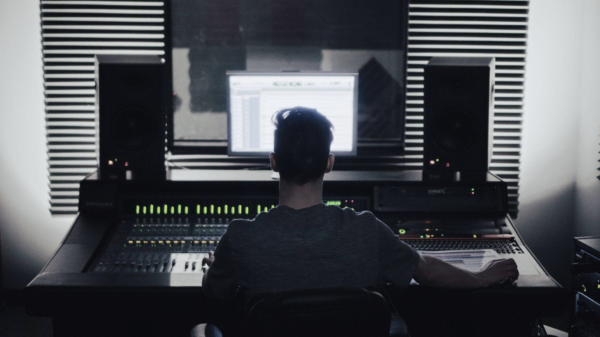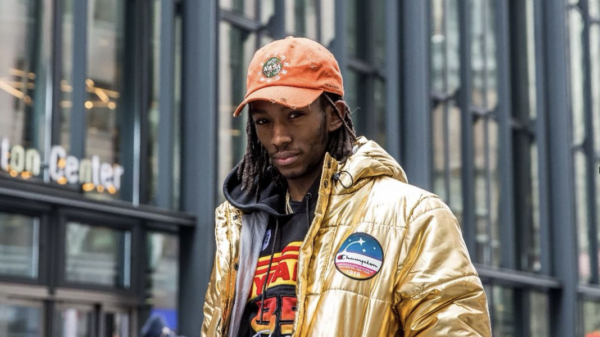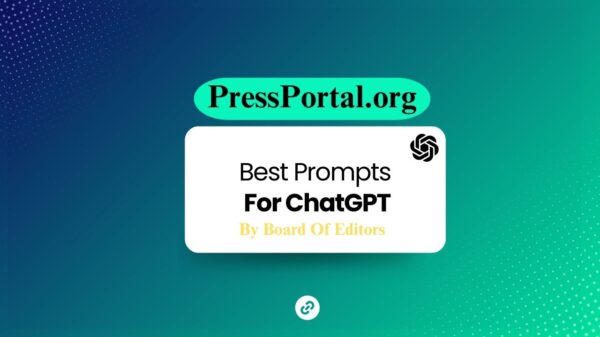When Jon Batiste performed the national anthem in front of millions of Americans watching the Super Bowl LIX broadcast from New Orleans’ Superdome, he paid homage to generations both past and present on the hallowed stage.
For the first time in the NFL’s championship history, Batiste weaved a sample into his rendition of “The Star-Spangled Banner”: the Triggerman beat, first taken as a loop from a 1986 song by the Showboys and subsequently used on decades of hip-hop, bounce, and dance music, from Juvenile’s “Back Dat Azz Up” to Beyoncé’s Renaissance. For Batiste, the performance was a way of honoring his hometown’s storied history and offering America a moment to reflect on the country’s journey, its current state of mind, and the uncertain path ahead.
“Never have I felt such a supercharged environment,” Batiste tells Rolling Stone. “It’s the poignance of that moment, the anthem at that time and this era, for people to get quiet just before the game starts, and meditate.”
For the five time Grammy-winning musician, the crescendo of the football season “means so much to so many people from all walks of life, and they culminate in this arena. And that moment leading up to the anthem is pure…. It’s a moment of reverence and reflection before all that energy that’s been built up gets to be acted upon in the actual game.”
He continues: “If you think about the traditions of elders and griots, and if you think about how you’re a storyteller, you’re taking all of this history and all of this sometimes baggage — especially for us in this country — with that anthem. You’re telling a story in reference to all of that.”
On a personal level, he says the performance made him think about his grandfather David Gauthier, whose legacy is sewn into the sound of Batiste’s sixth album, We Are. Batiste recalls taking his grandfather, who was 92, to the White House for the first time, and how he remarked on the paradoxical nature of a country built by their enslaved ancestors that had not lived up to its creed but was still “worthy of upholding.”
Editor’s picks
That sentiment echoed throughout Batiste’s stunning anthem, and later, in Kendrick Lamar’s halftime show, where dancers formed the American flag as he rapped the lyrics to “Humble” and Samuel L. Jackson donned a star-spangled suit as Uncle Sam. These daring performances took place while Donald Trump, the first sitting U.S. president to attend a Super Bowl, looked on from the stands.
Speaking with Rolling Stone the day after the performance, Batiste discussed his process behind reimagining the national anthem, why New Orleans represents the best of this country, and the work that lies ahead for America.
First, congratulations on that phenomenal performance on Sunday. There is a lot to unpack. How are you feeling?
Yes, indeed, yes. Lots of lots of things to process. You know, we process things in our subconscious, and then it kind of flows through the surface. But I’m also very conscious, being a musician and a dancer, of processing things through the body. I’m just feeling it today.
Your rendition of “The Star-Spangled Banner” weaved in “Drag Rap” by the Showboys, the first time a sample was used in a Super Bowl performance of the anthem. What drew you to that classic drum beat?
That beat is an example of the creativity and vision and ingenuity of America. New Orleans, to me, is the soul of America, one of the quintessential examples of what America is representative of at its best.
Drawing on the past and being rooted in the ancestors, in the diaspora of music and lineage, is amazing. That sample was just an example of something that actually didn’t originate in New Orleans, but when it got to New Orleans, it transformed. It’s become not only just a rap song, but a sample that’s used in hundreds of songs in street culture across New Orleans that we all grew up hearing at parties and cookouts and neighborhood events and coming blasting out of people’s cars and barber shops and laundromats. If you’re from Louisiana, especially New Orleans, you’ve heard that sample in your subconscious.
Related Content
I thought it was an amazing sample to play and bring into the anthem, because it’s its own form of an anthem for us. This game and me, representing the city and representing the people — not only of this country, but also of New Orleans and my family and my friends and all of us — was such a full-circle moment that I felt like that would be such an appropriate sample to use, given my approach was to really make the center of the anthem be this trifecta of my voice, my piano, and my sampling.
Your performance was both a homecoming and a celebration of New Orleans, which you really showed when you performed at George Washington Carver High School in the Ninth Ward the day before the Super Bowl. Why was it important for you to celebrate these often forgotten but fundamental places in the city?
When a big event comes to town, it’s often the places that make the city what it is and are the reason that these big events want to come there in the first place that are often forgotten in the process. And a lot of what is shown about New Orleans, particularly with the tourism industry and the party industry that celebrates this Mardi Gras aesthetic — which is really a faux Mardi Gras aesthetic — conceals New Orleans, rather than reveals New Orleans.
A lot of African diasporic communities around the world have been impacted by this sort of mentality. We get trapped in a feedback loop of sharing a version of ourselves that’s not really the fullest representation of our culture, so that tourists can want to come there and generate money, because a lot of these places are underserved, including New Orleans. So what I wanted to do was show the real culture and bring money to the community and bring attention to the real culture-bearers and communities that actually make the city what it is in the midst of this big event happening. To put a platform, both of economic stimulus and of growth, where people can continue to enjoy the culture, but also understand the meaning of it beyond the big event.
Keeping the current social climate in mind, you’re on the board of the Kennedy Center, and President Trump has said he is dismissing many of its members. Have you gotten any updates regarding your position there?
I’ve been so caught up with this weekend, I was really not able to check in to see what my current status is with the board. But you know, my view is that whether there’s a removal of me from the board or not, I’m always going to do the best that I can to figure out how to serve. If that means they take me off the board, I’ll find another way to serve. [The arts] aren’t just a job for me. The reason I join boards, start programs, and open up different businesses is because I believe that the more we use these incredible forces for good in the world — the forces of the arts and culture, our poetry and our dance, and all of the incredible things that our ancestors left us — the better we’ll be as people, and the better each generation will know who they are. We can’t dilute our arts and our culture for the sake of money. We can’t dilute it and make it be something that it’s not just because it sells.
There’s a lot of false symbolism and false activism, and there’s a lot of people who really capitalize on this half-baked symbolism without deliverables. It’s just masquerading as profundity and nationalism and patriotism. Any position that I’m sitting in, I’m going to be able to do what I believe is best for us. And anytime anyone entrusts me with a position, no matter who it is, I’m going to do my thing. That’s what I’m here to do.
In what way do you think artists can stay true to that goal of coming together as a community and creating meaningful art?
There’s so much that we can do to create meaningful art that stays true to who we are. One person’s authenticity is not going to look like what another person’s authenticity looks like, but the vibration of authenticity and meaningful art coming from an authentic place can still be made in pursuit of unity, in pursuit of community and upliftment and pursuit of excellence — and that can generate hope. There’s a lot of gifted people who are out there, but we really need to make everything be less about the individual and more about us coming together in collaboration and using the tools that have been left for us, taking the past into the present and designing the future, versus responding to things that are happening and reacting.
That’s why I felt the sample was so important. You know, it wasn’t even on the radar of everybody at the NFL until three or four days before the performance. They all were saying, “We can’t get it clear. Just take it out.”
And I just knew somewhere deep down that it would sort itself out, because it just was so aligned with the moment, and with what needed to happen. I knew the way that I was going to perform it vocally was going to have this grateful but powerful tonality, almost like it’s going through different vocal placements.
Could you walk us through that moment in the performance?
At one point, it’s like a deacon in a church giving a sermon. At another point, it’s almost like this sort of mixed voice bordering on operatic tone. And then at the beginning, you have the storytelling tone and the tradition of how you would hear some of the blues performers, or maybe even if you were listening to the way that jazz singers will deliver a lyric, and thinking about those samples blended in with the chords that I was putting in there. Then at the very end, to have this moment where I repeat the “the land of the free” three times — that’s how a pastor would do it.
Then to reach that last note — “brave” — and to belt that note out and hold it for across the bar line and underneath it, you have so many different keys and different melodies coming together at one time. So, there’s no key center. It’s like all of the different walks of life that come together to create America, converting and clashing until they find out of that dissonance some sort of connectivity: E pluribus unum.
Then the chords resolve back into the home key center, and that was all happening underneath the word “brave.” I knew that the sample was important for that tapestry and that journey that I was creating with my voice and with the piano. It all worked out in many ways. That’s just very unusual that there was so much that happened to make it be the first in history, as you said. But it was just something that I knew, even though that hadn’t been done before, something that needed to happen in this moment.
It’s fitting that you delivered a performance like that in New Orleans, a city that lives and breathes storytelling.
When you think about that tradition of storytelling, the great orators and the preachers and the deacons, they always say something three times. If you listen to that sort of cadence … the first time you hear it, it means something. The second time you hear it, it’s a whole other thing that strikes you about it in a different context. And the third time you hear it, it changes my frame of thinking of this. There’s so many things that are spoken that are not in a lyric. It’s unsaid, intangible. It’s in the way you say it, and then the chord you choose. And that’s the power of music. It transcends what’s on the page.
It speaks to what you were saying earlier about designing the future of art and music, rather than simply responding and reacting.
That’s our role. We’re inheritors of this great cultural inheritance. Foundational pillars of our culture and our history came through so much sacrifice and so much collective experience. Now those foundational pillars are set. They’re layered and we’re building on them. We didn’t have to do that part of the work. Now our part of the work is with these foundational pillars. What are we going to build?





























